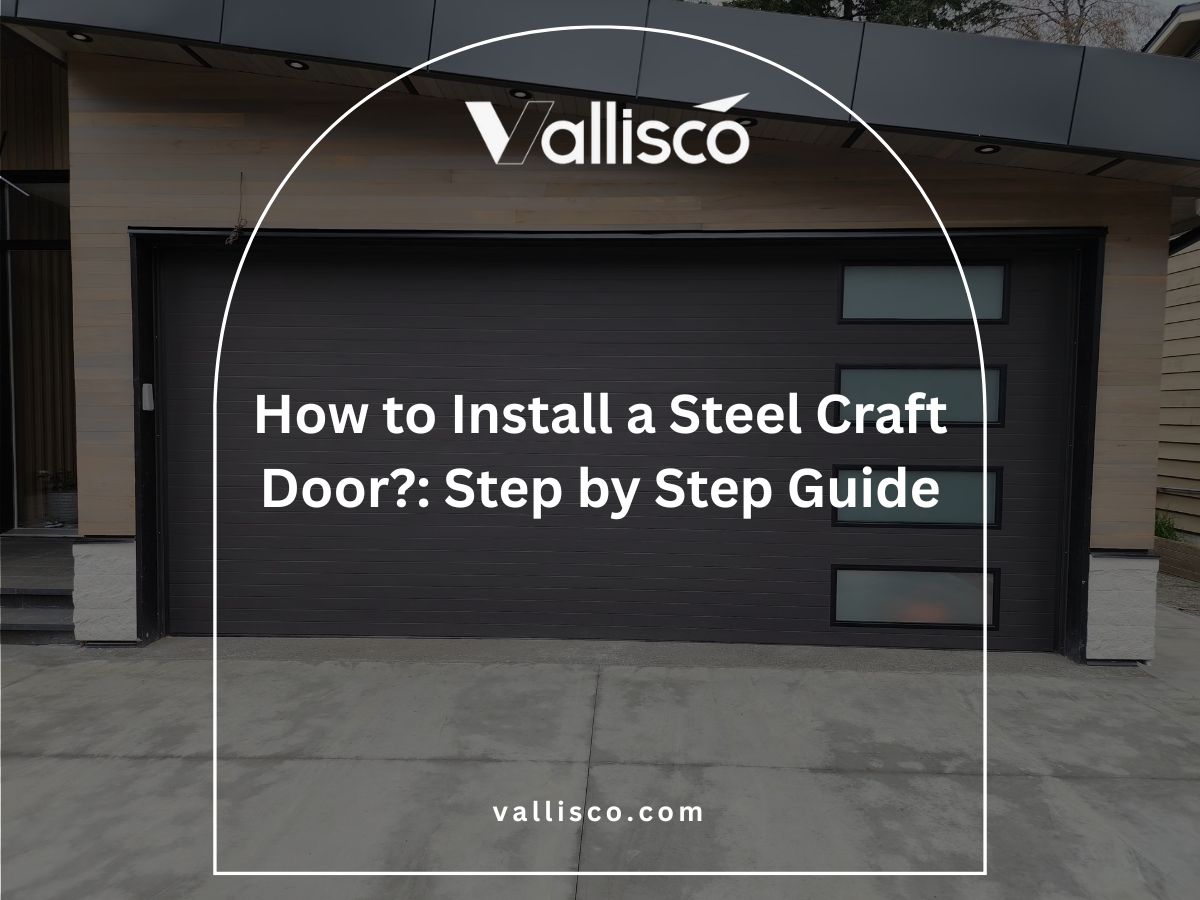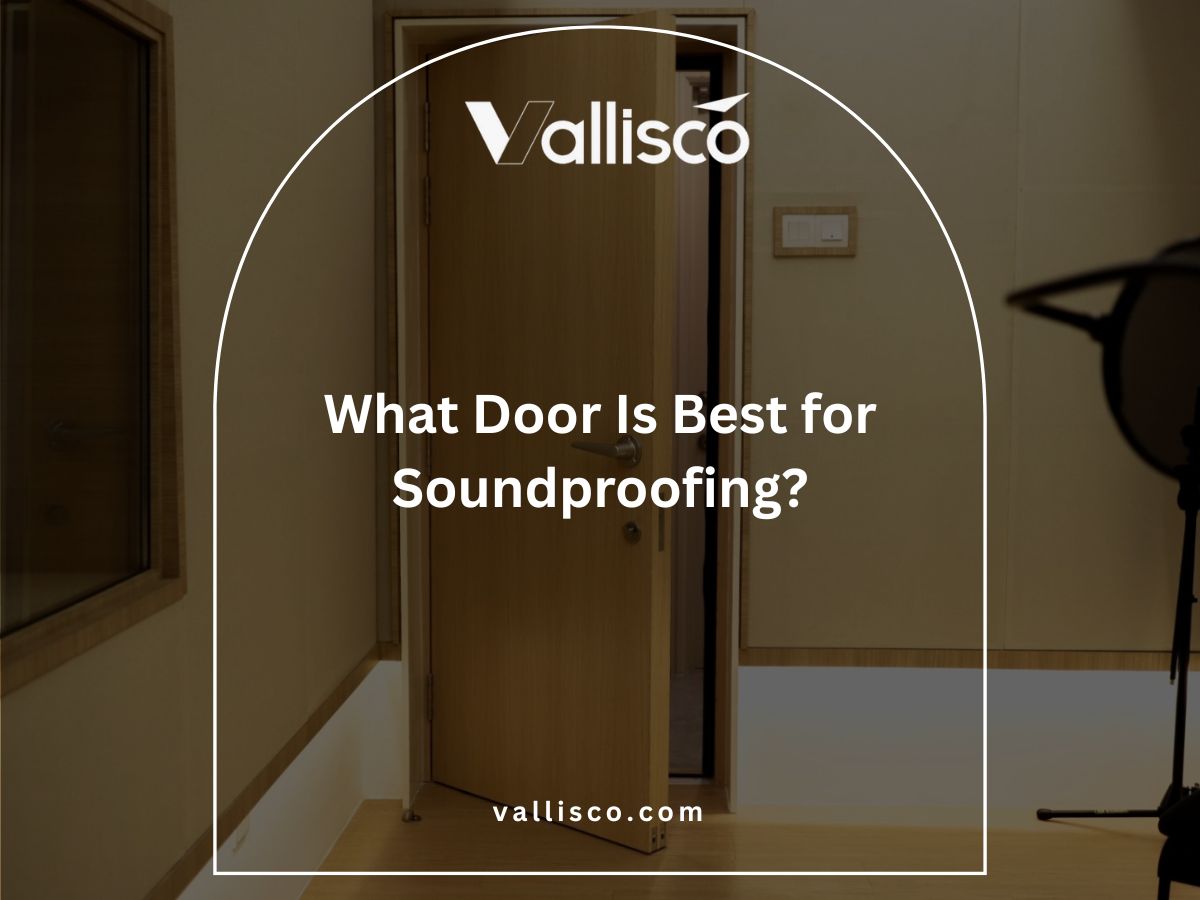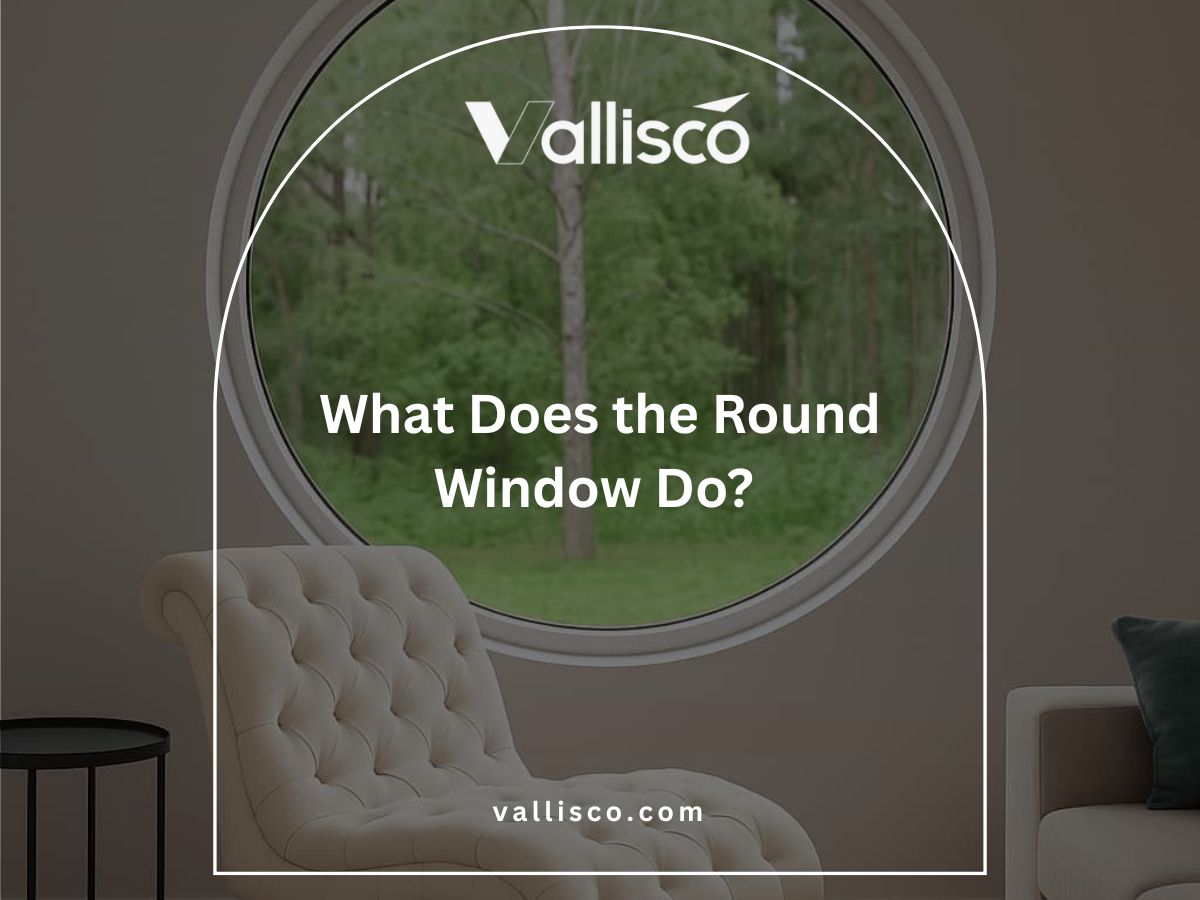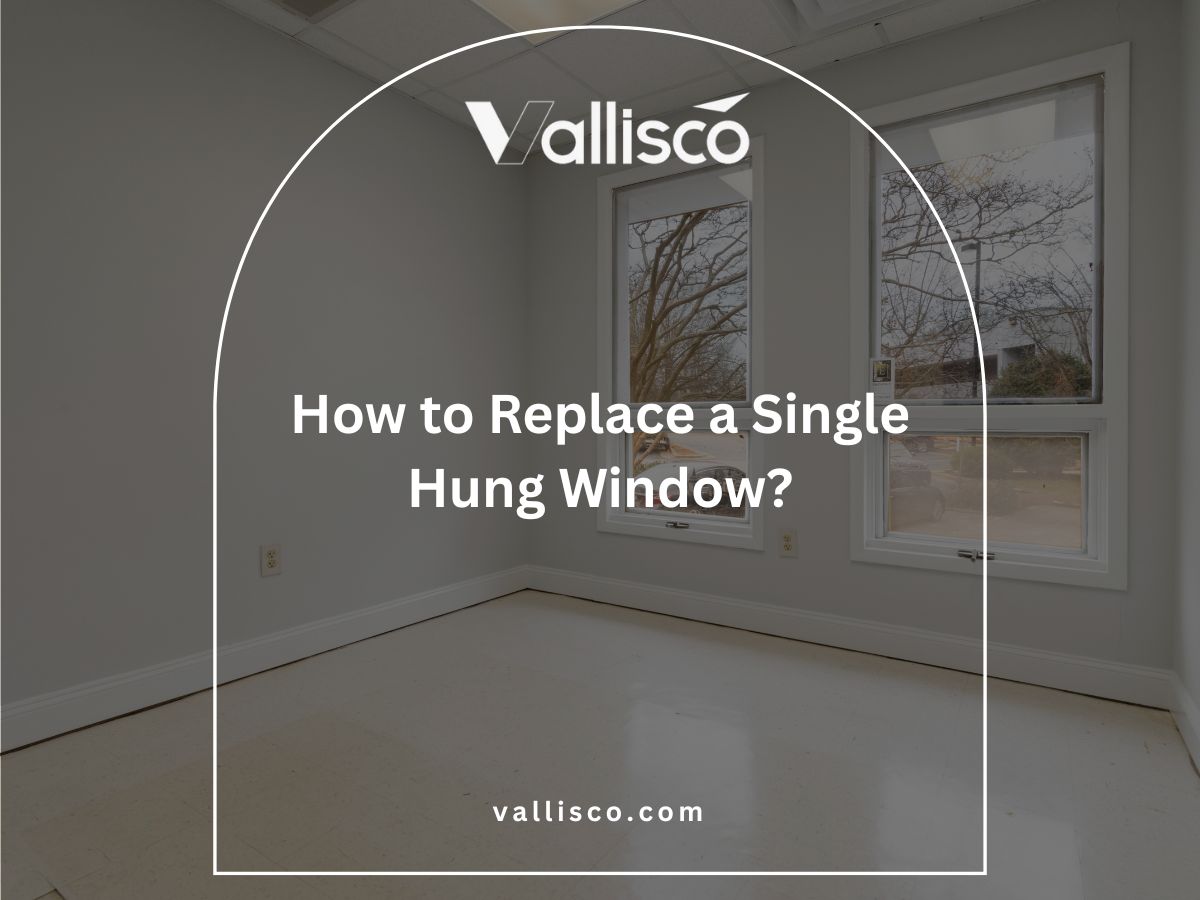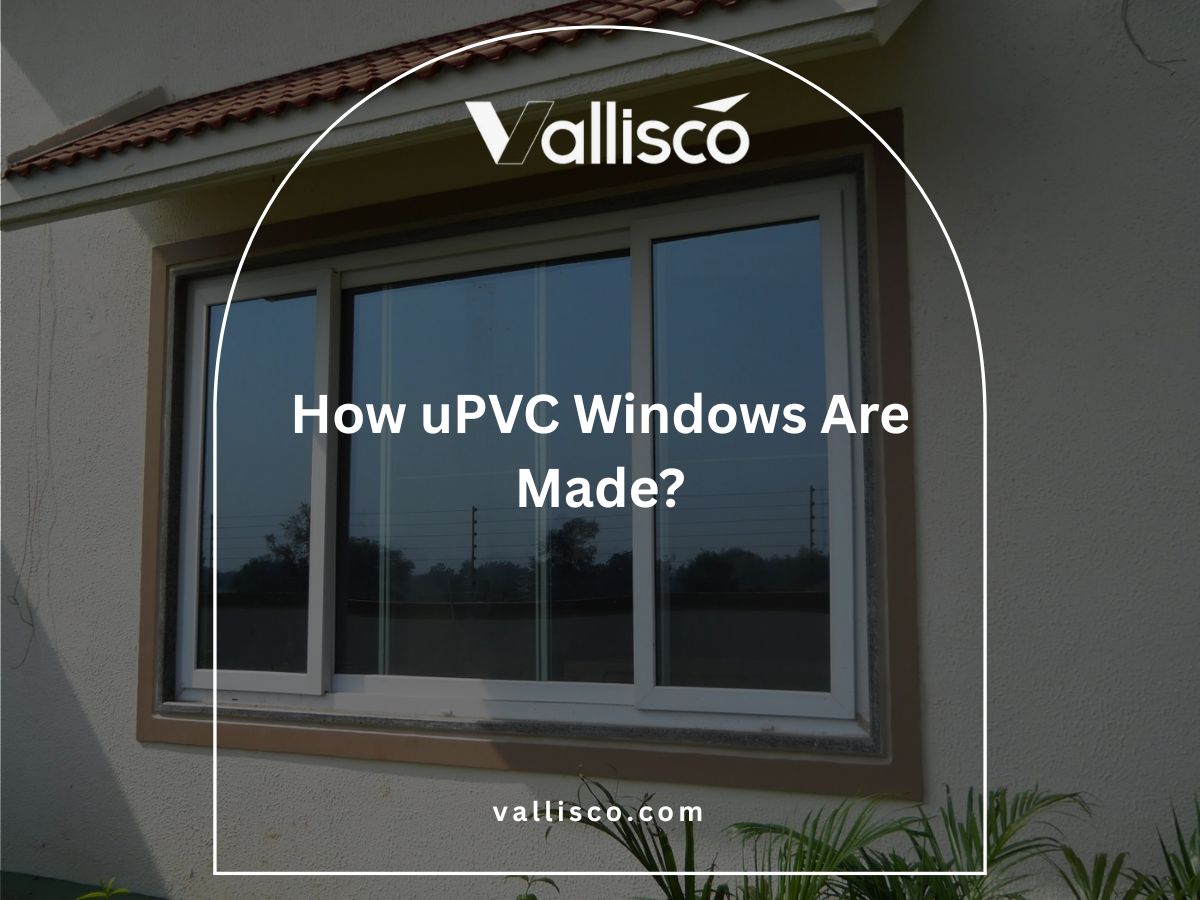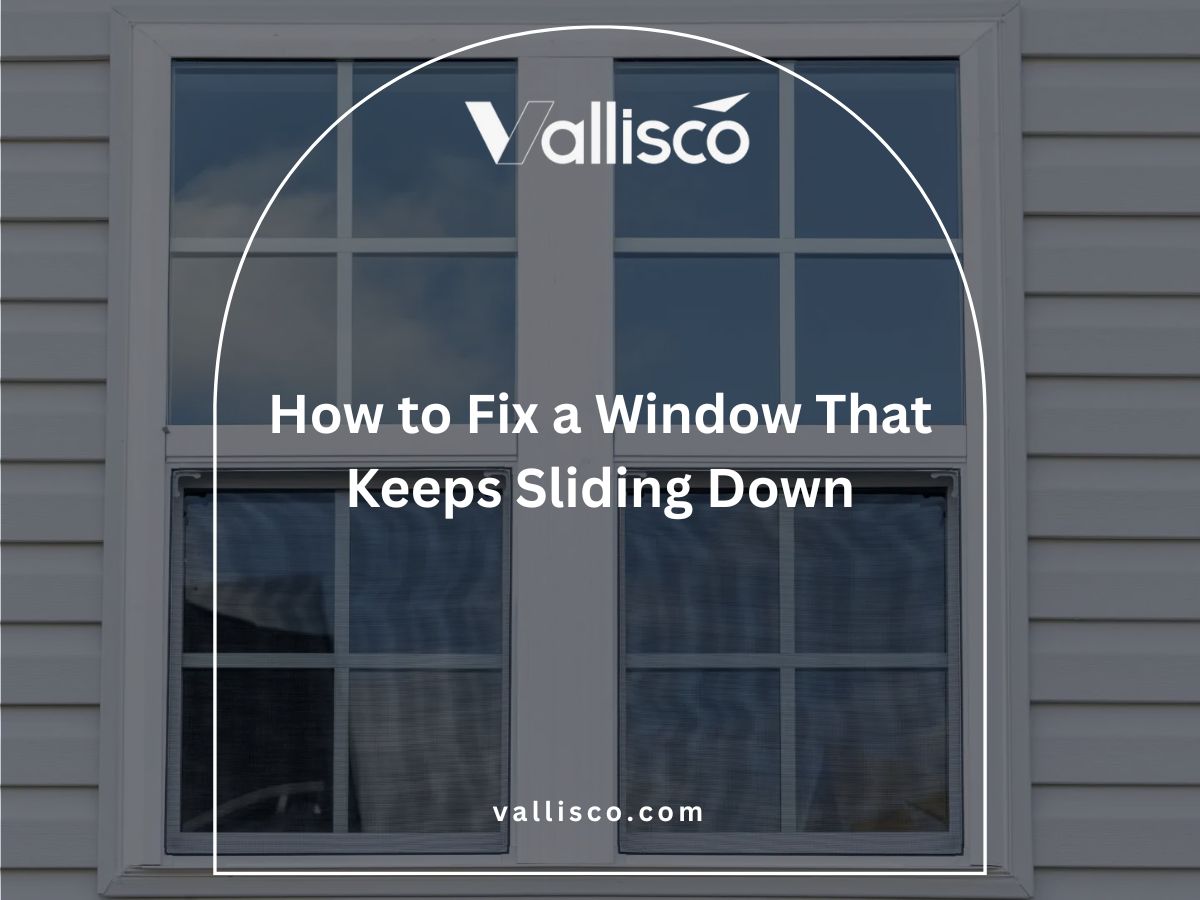Choosing the right door for a villa isn’t just about looks. I’ve seen projects go sideways because the wrong door was picked poor sealing, fading finishes, or security gaps.
That kind of risk isn’t worth it, especially when better options are available.
Over the years, I’ve worked with developers and engineers sourcing doors for villas, guesthouses, and boutique hotels. My advice comes from real use not just catalogs.
In this article, you’ll see 10 doors that strike a good balance between style, strength, and long-term value. If you’re comparing options right now, this list will save you time and costly mistakes.
You’re not just installing a door you’re setting the tone for the whole building.
So let’s get down to it!
Quick Comparsion Chart
Before we dig into the details, here’s a quick side-by-side look. Think of it as your first glance at what makes each door type different because sometimes, one small feature changes everything.
| Door Type | Visual Style | Key Feature Highlight | Core Limitation | Not Ideal For | Best For |
| Solid Teak Wood Door | Classic, natural, warm | Dense hardwood with strong natural weather resistance | Requires sealing; high cost up front | Low-budget builds or low-maintenance projects | Villa main entrances in hot or humid climates |
| Aluminum Glass Door | Minimalist, modern | Thermal break slows heat transfer in metal frames | Less insulation than solid-core doors | Loud or extreme climates where full sealing matters | Large modern builds needing wide glass views |
| uPVC Double Door | Simple, neutral, basic | Low-cost, durable, and low-maintenance | Weak in extreme heat; basic aesthetics | Premium facades or hot, direct-sun installs | Side or staff entrances in mild-weather properties |
| Wrought Iron with Glass | Bold, traditional, detailed | Heavy, decorative frame with tempered glass | Risk of rust without quality coating | Simple elevations or areas with tight space | Grand front entries with Mediterranean or stonework |
| Composite Pivot Door | Seamless, modern, dramatic | Wide swing panel supported by pivot hardware | Not airtight; needs strong floor/frame support | Narrow porches or projects with tight energy specs | Contemporary villas with bold entrance design |
| French Door | Bright, open, classic | Double swing glass doors with flexible layout | Needs space for swing; insulation depends on glass | Cramped interiors or single-season villas | Garden access or shared spaces in warm climates |
| Sliding Glass Door | Clean, open, airy | Smooth-gliding panels for tight areas | Tracks can collect dirt; weaker sealing | Front entries or builds needing full lock-seal setup | Patios, balconies, or narrow back entries |
| Flush Door with Veneer | Modern, subtle, sleek | Flat, laminated surface in various finishes | Not weatherproof unless protected | External walls or exposed doorways | Interior guest areas or room-to-room transitions |
| Steel Security Door | Strong, industrial, secure | Reinforced core and lock-ready | Limited style options; feels less welcoming | Main entrance of high-aesthetic homes | Hidden entries or villas in higher-risk locations |
| Frameless Glass Door | Transparent, sleek, light | No visible frame, full glass panel | Less thermal control; fragile in exposed installs | Exterior use or areas with rough climate or traffic | Bathrooms or interior visual dividers |
Now that you’ve seen the big picture, let’s explore each option one by one. The right choice might surprise you.
1. Solid Teak Wood Door
There’s a reason teak shows up in so many villa builds it performs well year after year. Between its natural resistance and clean look, it’s one of the few materials that holds up without constant attention.
This door isn’t just about looks. It’s a long-game option that works best when your project values durability over shortcuts.
Key Features
- Natural Resistance: Teak naturally repels moisture and insects without the need for chemical treatment. That makes it well-suited for exposed exterior use.
- Hardwood Strength: Its dense grain resists impact, bending, and surface wear. This gives it a longer usable life under frequent use.
- Refinishing Flexibility: The surface can be sanded and resealed multiple times. That makes it easier to maintain long project lifecycles.
- Architectural Compatibility: Works well with traditional, colonial, and tropical-style villas. Available in plain slab or detailed carved designs.
- Thermal and Acoustic Control: Its solid mass blocks outside noise and heat. That improves comfort in guest-facing or front-entry areas.
Best Use Cases
- Villa Main Entrances: Often used for primary front doors due to its weight, feel, and appearance. Adds visual substance to wide or double-door designs.
- Hot or Humid Climates: With proper sealing, teak holds up well in high UV, coastal, or monsoon conditions. A good match for long-term tropical builds.
- Natural Material Specifications: Chosen for projects emphasizing organic or locally sourced finishes. Delivers a visible wood texture clients can see and feel.
Considerations Before Choosing
- Regular Maintenance: Requires sealing every one to two years to prevent fading or surface cracking. This should be built into the long-term property plan.
- Heavy Material: Installation requires reinforced frames and high-capacity hinges. That adds labor and hardware costs upfront.
- Higher Initial Cost: Teak is more expensive than standard wood species. However, its lifespan and refinishing ability can reduce future replacement needs.
- Quality Variation: Grade and origin affect durability. It’s important to confirm the source and drying method before placing an order.
If you’re after a front door that’s solid, proven, and looks better with time, teak is hard to argue with. Vallisco offers teak doors built for long-term reliability in projects where first impressions and performance matter.
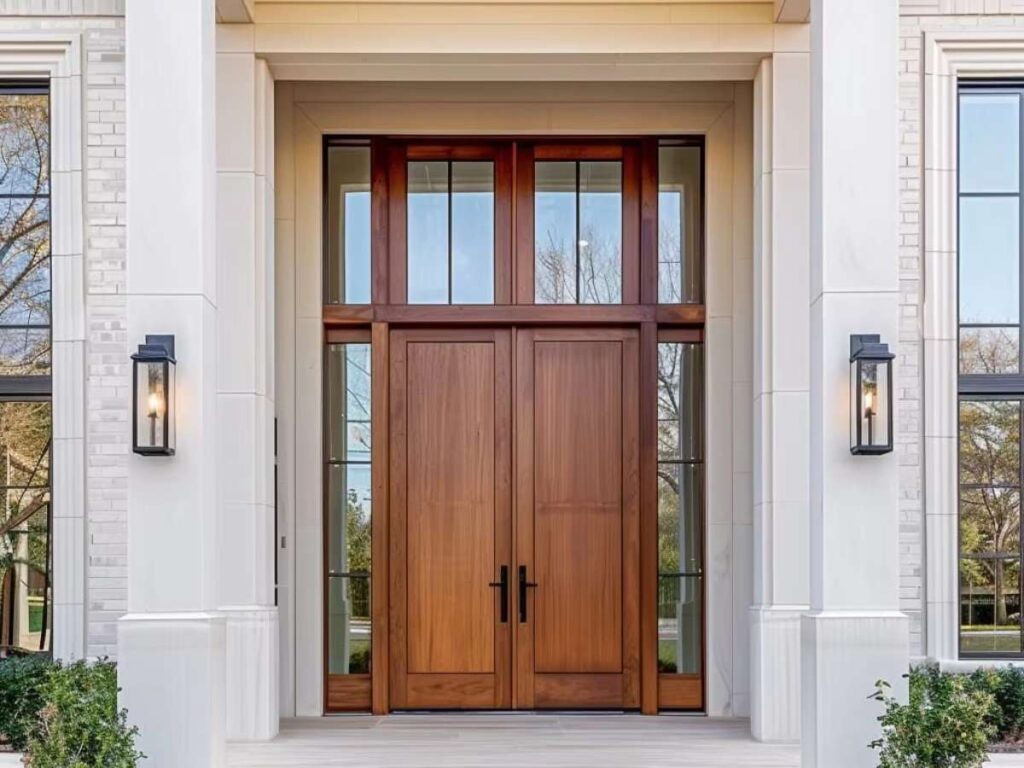
2. Aluminum Glass Door (Thermally Broken)
Glass-forward villas have their own challenges especially when you’re balancing looks with insulation. I’ve seen teams struggle when standard aluminum frames couldn’t keep up with regional energy codes.
These thermally broken systems are built for that exact gap. With the right install crew and proper glazing, they deliver both design and performance where it counts.
Key Features
- Thermal Break System: The frame includes an internal barrier that slows heat transfer. This helps maintain interior temperature without adding visual weight to the opening.
- Support for Large Panels: The aluminum frame holds oversized glass securely without sagging. Useful when wide or tall door openings are part of the plan.
- Low-Maintenance Surface: Powder-coated finishes handle exposure without flaking or rusting. No painting, no staining, just long-term durability.
- Minimalist Frame Design: Narrow profiles increase visible glass area and reduce frame bulk. Ideal for villas that emphasize light and open space.
- Glazing Flexibility: Compatible with high-performance glass types for thermal or acoustic upgrades. Easily tailored to meet region-specific standards or client preferences.
Best Use Cases
- Modern or Contemporary Villas: Frequently used in properties where simplicity and open views are key. Often installed as main entries, patio transitions, or full-height sliding systems.
- Climate-Controlled Zones: Helps regulate indoor comfort in builds exposed to high sun or strong seasonal shifts. A practical solution when HVAC loads need to stay predictable.
- Projects Requiring Predictable Upkeep: Performs well in properties with limited maintenance schedules. Often specified for villas in remote areas or multi-unit developments.
Considerations Before Choosing
- Lower Insulation Than Solid-Core Doors: While efficient, it won’t match the full thermal or acoustic control of composite or solid wood doors. Best paired with a comprehensive building envelope.
- Glass Determines Final Performance: The effectiveness of the door depends on the glazing spec. Poor-quality glass will limit overall results.
- Frame Finish May Be Limited: Not all suppliers offer custom coatings or textures. Early coordination is needed if matching nearby materials.
- Requires Exact Installation: These doors don’t allow much margin for error. Air leaks and misalignment happen when sealing isn’t done properly.
This door works best when clean design, long-term stability, and controlled comfort are part of the build requirements. A strong option when glass isn’t just a feature it’s a functional part of the villa.
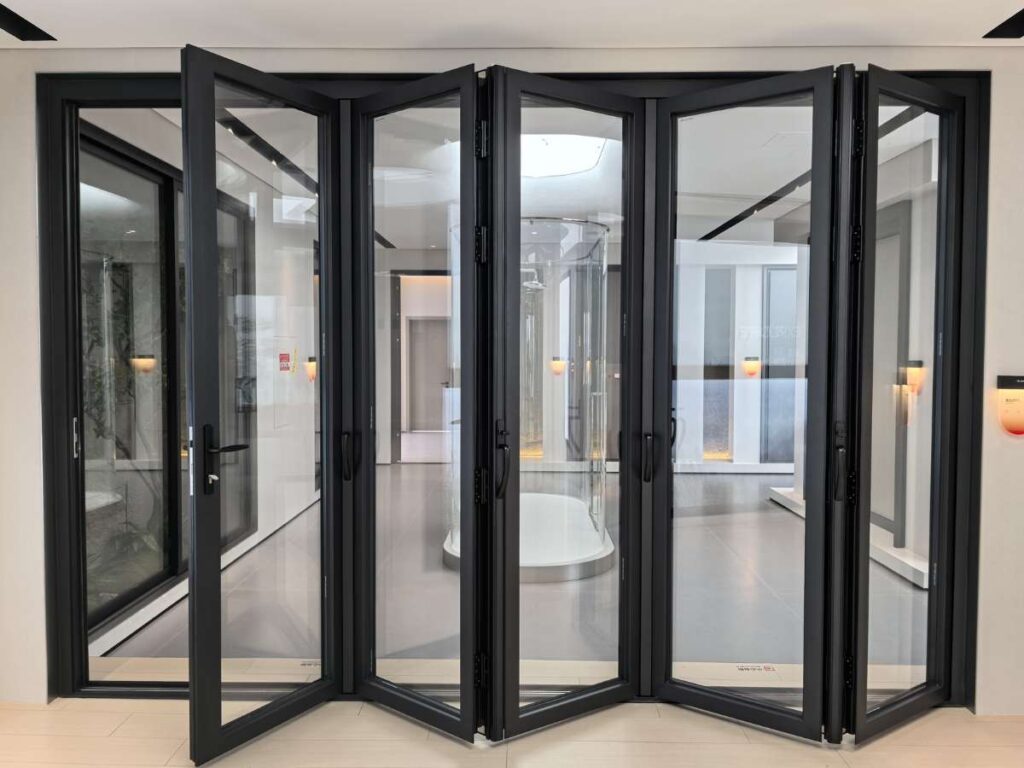
3. uPVC Double Door
Not every part of a villa project needs to stand out some just need to work. That’s where uPVC double doors tend to fit best.
They’re the kind of solution you reach for when the goal is straightforward: low-cost, no-drama installation, and reliable use over time.
Key Features
- Weather Resistance: uPVC holds up moisture, salt air, and changing seasons without surface damage. No swelling, peeling, or rusting down the line.
- Thermal Insulation: The multi-chambered frame keeps indoor temperatures more stable. It helps reduce the strain on cooling systems, especially in moderate climates.
- Low-Maintenance Finish: No sealing or repainting needed after installation. For many projects, that’s one less thing to follow up on later.
- Cost-Controlled Material: Lower material and fabrication costs compared to aluminum or hardwood. Often helps keep large-scale builds on track.
- Neutral Appearance: Simple lines and standard colors don’t draw attention. It’s the kind of door that blends in and does its job quietly.
Best Use Cases
- Service and Side Entrances: Frequently installed in non-guest-facing areas. Think about staff access, laundry zones, or garden entries.
- Properties in Mild Conditions: Performs best in areas without extreme sun or temperature swings. Too much heat or UV can reduce long-term performance.
- Developments Focused on Scale and Simplicity: Used where repeatability and low upkeep are valued over detail. Common in row villas, rental properties, or phased builds.
Considerations Before Choosing
- Limited Design Flexibility: Color and finish options are basic. If your facade has custom elements, this frame may not align visually.
- Not Built for Harsh Sun: Direct exposure in hot climates can affect surface strength. Some installs benefit from shading or covered placement.
- Reinforcement Needed for Wide Spans: On larger openings, flex can become an issue. Reinforced cores or tighter hardware specs may be required.
- Can Be Perceived as Budget-Grade: While functional, this isn’t the door you put in front of a luxury design. Useful to keep it out of high-profile sightlines.
uPVC double doors offer basic, dependable performance where high design isn’t the focus. They’re often the right call when the job needs to stay lean and move fast.
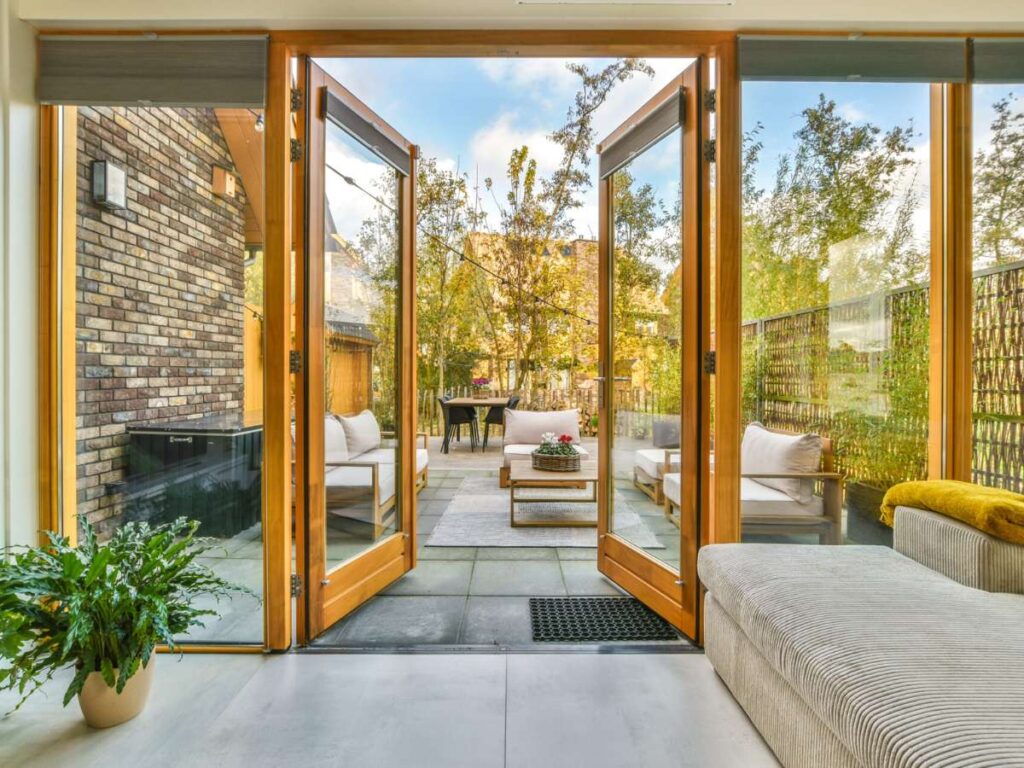
4. Wrought Iron Door with Glass Inserts
This type of door is hard to ignore whether you’re walking up to it or working it into plans. It holds visual weight and real weight, which is exactly why it’s used when a project needs both.
It’s not for every job, but when the design calls for presence and permanence, this is a solid match.
Key Features
- Visual Presence: The size, material, and detailing all communicate permanence. It’s the kind of door people notice before they step inside.
- Custom Ironwork Options: Whether scrolls, grids, or arch-top frames, the design can follow the style of the home. Helps when working with traditional or Mediterranean layouts.
- Tempered Glass Inserts: Lets in filtered light without giving up privacy. The insert options vary, but most strike a balance between function and aesthetics.
- Durable Framing: With the right coating, the frame holds up well outdoors. Surface prep matters here more than the metal itself.
- Substantial Weight: It doesn’t just look heavy it is. That gives a sense of security that some clients specifically ask for.
Best Use Cases
- High-Impact Main Entrances: Used when the door needs to match architectural weight stone facades, brick builds, or large pillars. It anchors the front visually.
- Guest-Facing Areas That Need Privacy: Great for entryways that face streets or shared drives. The glass softens the design without making it feel exposed.
- Owner-Driven Custom Builds: A solid match for villa projects where the design is led by the client. These are rarely used in bulk, but often chosen for one-off homes.
Considerations Before Choosing
- Finish Quality Affects Longevity: Powder coating or galvanization is a must. In coastal zones, rust issues can show up fast without proper prep.
- Install Takes Extra Planning: The frame needs to be perfectly aligned and supported. If you don’t prep for the weight, expect callbacks.
- Glass Insert Replacement Isn’t Standard: If a panel breaks, it’s not always a stock item. Keep that in mind for remote or overseas builds.
- Style Doesn’t Suit Every Facade: This door needs a matching environment. Dropping it into a simple boxy elevation can feel off-balance.
Wrought iron with glass works best when you need a door that matches bold architecture and lasting presence. It’s not a plug-and-play option but in the right project, it does more than fill a frame.
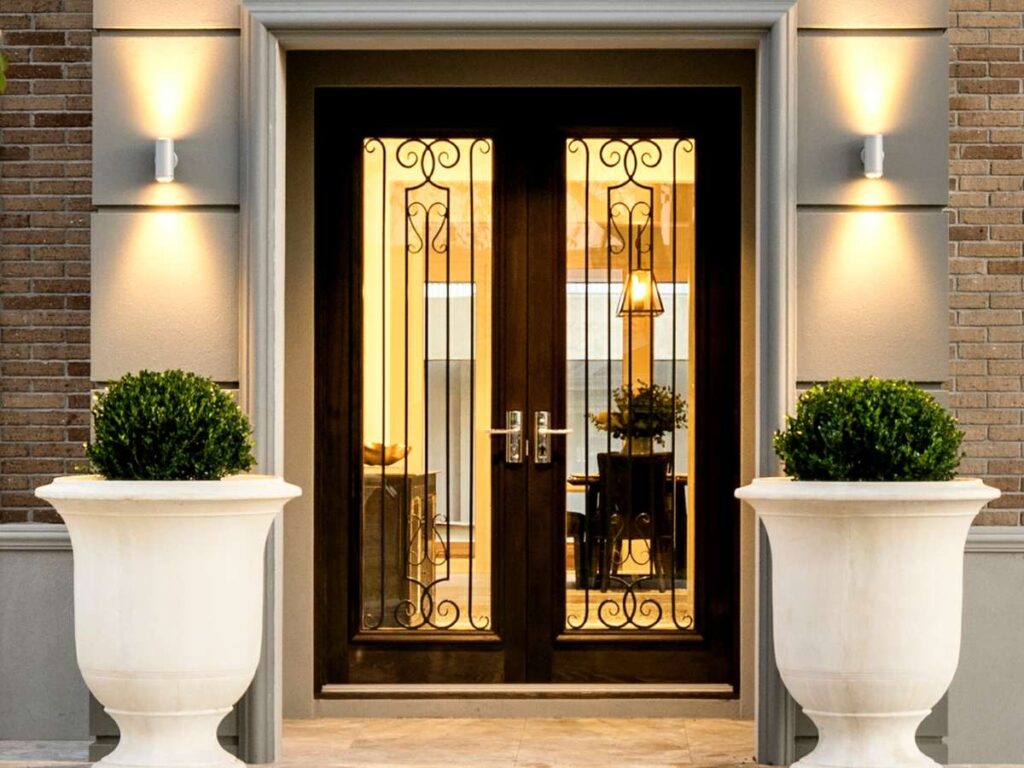
5. Composite Door (Fiberglass Core)
Sometimes what a project needs is a bold entrance without the extra bulk of old-style framing. Pivot doors give you size, flow, and a clean profile that fits modern villa builds.
They’re not the most common choice, but when used right, they’re hard to forget.
Key Features
- Pivot Hinge System: The door rotates on a pivot point instead of side hinges. This allows wider panels to operate smoothly without added strain on the frame.
- Clean, Modern Look: The slab often runs floor to ceiling with minimal trim. It fits naturally in contemporary architecture and open-plan designs.
- Smooth Operation: Balanced hardware makes large doors feel lighter to open. That’s helpful when size is needed but effort should stay low.
- Frame Flexibility: Can be installed flush with walls or hidden in the siding detail. This allows the entrance to feel seamless.
- Material Range: Available in wood, aluminum, or composite cladding. Makes it easier to align with facade materials.
Best Use Cases
- Contemporary Villas With Wide Entryways: Works well in homes where architecture leads with open volumes and clean geometry. A common fit for high-end custom builds.
- Design-Driven Projects: Often used as a signature feature rather than just a door. Helps anchor the overall look and set the tone at first entry.
- Properties That Can Support Premium Hardware: Requires precise installation and strong structural support. Usually better for single builds, not bulk units.
Considerations Before Choosing
- Not Ideal for Tight Sealing: Pivot systems leave small gaps by design. That can affect insulation if not addressed with secondary seals or screens.
- Hardware Must Match Weight: Heavy panels need matched pivot hardware and proper floor reinforcement. Undersizing here leads to sagging or binding.
- More Space Needed for Swing: The rotation arc is wider than a traditional hinged door. That may limit placement near steps or tight porches.
- Cost Reflects the Customization: Typically priced above standard systems. Makes more sense when design value offsets the cost difference.
Pivot doors work best in villas that treat the entrance as a design feature, not just an access point. They offer scale and simplicity but only when the build is ready to support them.
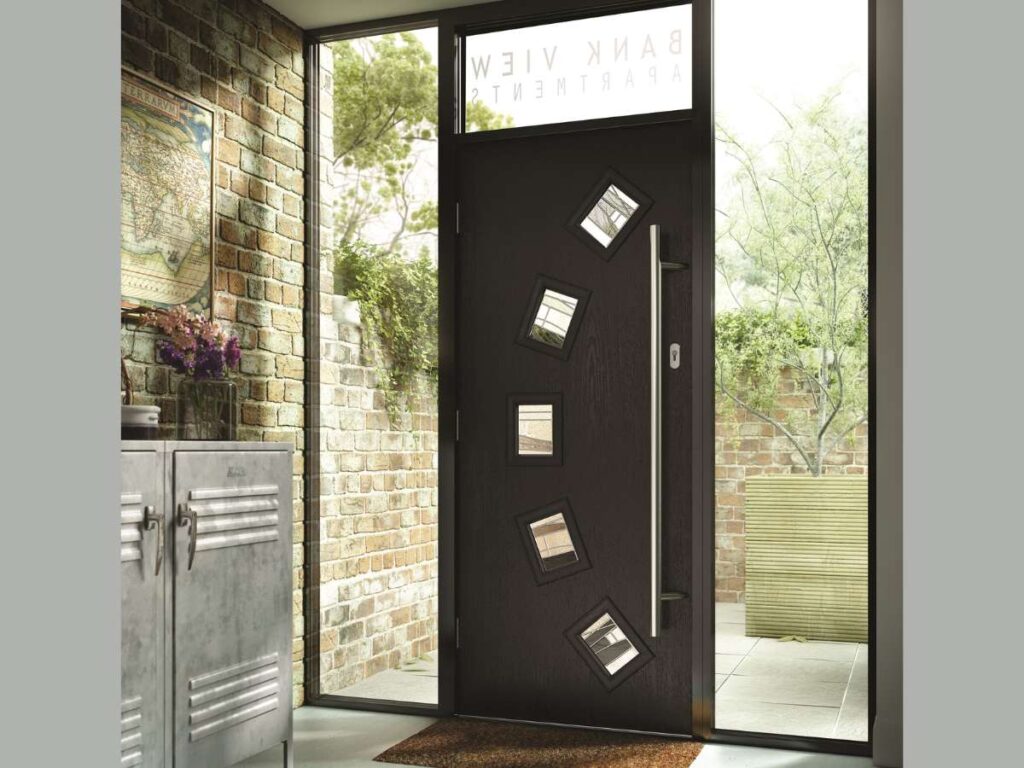
6. Pivot Door
French doors often come up in projects where space needs to feel more open but still controlled. They’ve helped us solve layout issues without tearing down walls or blowing up budgets.
The blend of form and function here is simple, but effective.
Key Features
- Double Door Function: Both panels open wide when needed. This makes them feel less like a barrier and more like a transition between zones.
- Full Glass Panels: Brings in daylight without needing larger windows. In most layouts, it helps tie the inside to the outside naturally.
- Flexible Installation: Can be configured to swing inward or outward depending on space. That’s useful when working around patios or narrow terraces.
- Various Frame Materials: Options include aluminum, composite, wood, or uPVC. Each one comes with trade-offs in maintenance and appearance.
- Hardware Compatibility: Supports basic locks or more advanced systems. Helps meet safety requirements without complicating daily use.
Best Use Cases
- Back Entrances and Outdoor Transitions: Great for spots where the goal is to connect indoor space with gardens, pools, or courtyards. They help create that “open when you want it, closed when you don’t” flexibility.
- Common Areas in Guest-Facing Spaces: Adds a sense of openness in lounges or dining rooms without leaving things exposed. On many of our past projects, this has been a go-to for villas with smaller shared zones.
- Spaces That Need Flexibility: Ideal in properties where the layout changes based on season or occupancy. French doors let you shift from open flow to full privacy in seconds.
Considerations Before Choosing
- Not Ideal for Tight Interiors: The swing needs room to function. That’s something to check before framing or finishing nearby walls.
- Glass Choices Affect Comfort: Thin or single-pane glass won’t hold heat or block noise well. Double glazing should be the default in most cases.
- Less Wall to Work With: Once installed, you lose usable wall area for switches or shelving. Important to coordinate early in the layout.
- Material Maintenance Varies: Wood needs more upkeep over time. Composites and aluminum offer easier long-term care.
French doors make sense when you want openness without giving up structure. They work best in projects that benefit from more daylight, more access, and a little more breathing room.
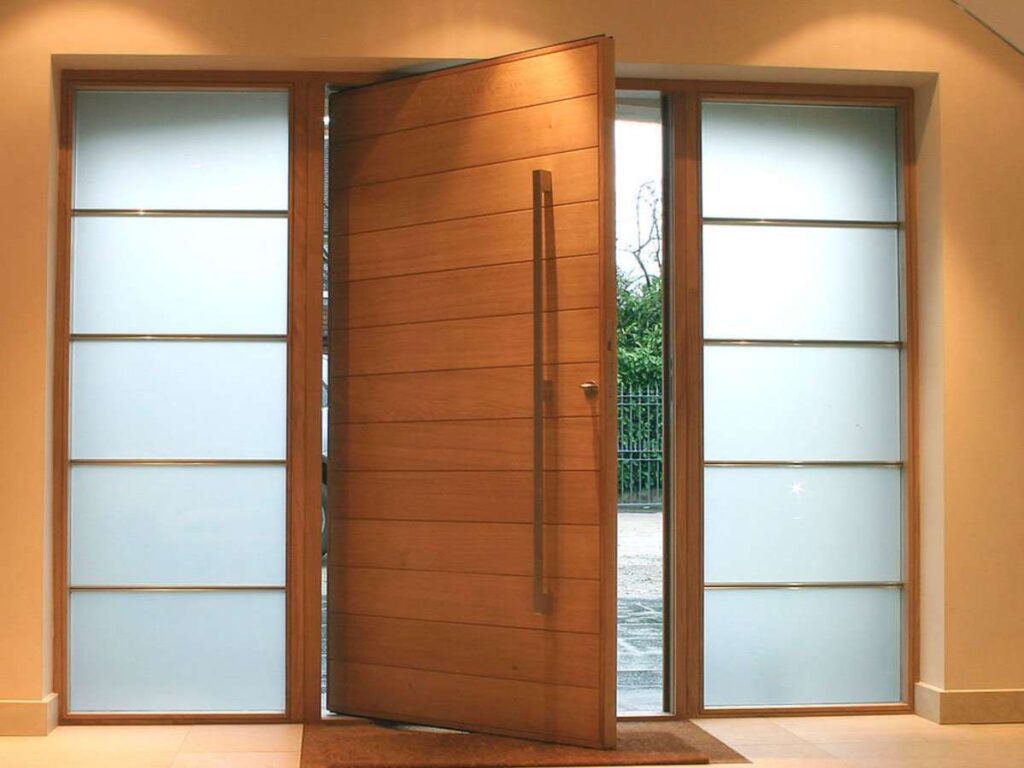
7. French Doors
Some spots in a villa don’t need a grand entrance just something smart that fits the space and gets the job done. Sliding glass doors are often the answer when the layout is tight, but you still want daylight and access.
They quietly handle areas where other doors can’t.
Key Features
- Side-to-Side Operation: The panels slide along a track instead of swinging open. That’s useful in tight patios or narrow walkways.
- Large Glass Surface: These doors often cover wider openings than standard styles. Good for maximizing daylight and outdoor views.
- Track-Based Movement: Runs on top or bottom rollers depending on the system. Smooth operation depends on how well it’s installed and maintained.
- Framing Options: Available in aluminum, uPVC, or composite materials. Each one offers different benefits depending on budget and climate.
- Glazing Flexibility: Supports double or triple-pane glass for better temperature and sound control. Glass upgrades matter more here since the panel area is large.
Best Use Cases
- Tight Floor Plans With Limited Clearance: A common solution when there’s no room for a door to swing. We’ve seen these used behind sofas, next to dining spaces, or in narrow decks.
- Outdoor Access From Living Spaces: Helps connect indoor areas with balconies, gardens, or pools. Guests tend to use them more often because they’re easy to open and close.
- Projects With Wide Openings and Minimal Walls: Ideal in villas that rely on glass for both design and daylight. These doors give a clean transition without breaking up the view.
Considerations Before Choosing
- Tracks Need Regular Cleaning: Dirt or grit buildup can affect movement. Not a big issue—but one that shows up fast if left unchecked.
- Less Airtight Than Hinged Doors: The sliding mechanism has more movement points. Proper sealing helps, but there may still be slight drafts over time.
- Not Ideal for Main Security Entry: While lockable, these aren’t usually used as front doors. Better suited for side or rear access points.
- Hardware Quality Makes a Difference: Cheap rollers and frames tend to wear out. It’s worth investing in a better-grade system up front.
Sliding glass doors are best when you need openness without swing space, and access without complication. They’re easy to use, easy to place, and if installed right rarely cause trouble.
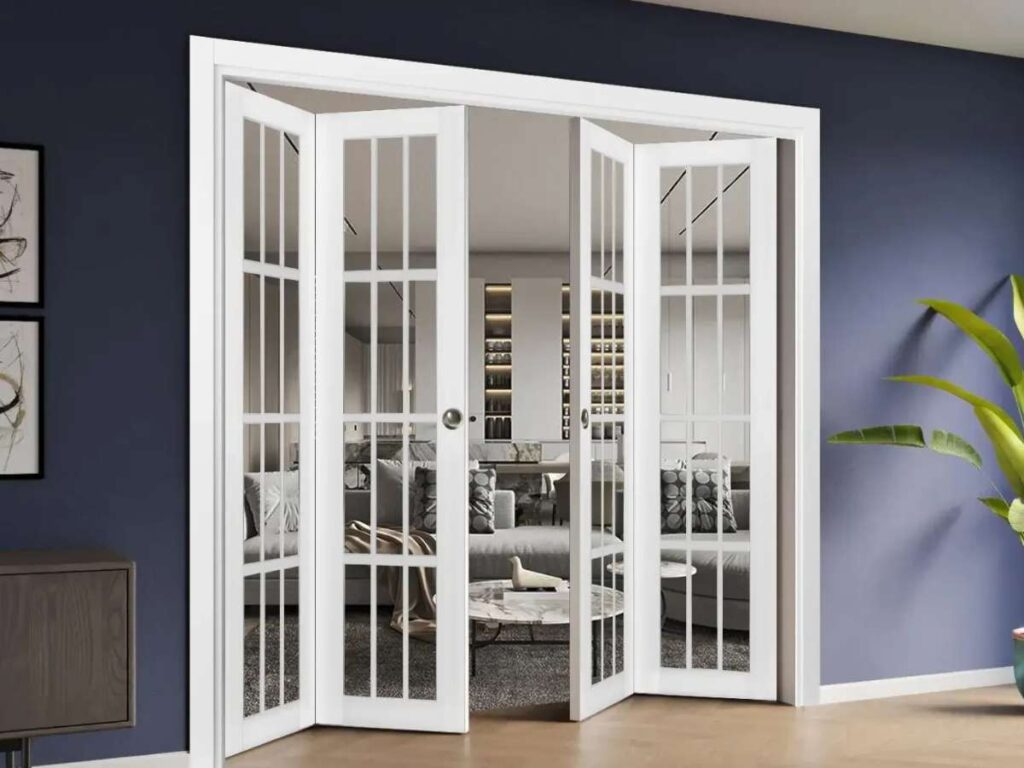
8. Sliding Glass Door
Let’s be honest some entry points don’t need to impress, but they still need to hold up under pressure. Think of side doors, utility areas, or back entrances in a villa. You want something that looks neat, doesn’t draw attention, and still delivers real protection.
This type of door hits that mark. It’s strong where it counts, but the surface keeps things clean and simple for projects that mix function with design.
Key Features
- Steel Core Construction: Hidden inside is a full steel layer that adds strength. It’s what makes this door feel different the moment you try to move it.
- Veneer or Laminate Surface: The finish looks clean and blends with modern or wood-style interiors. It softens the heavy-duty feel without losing function.
- Fire and Impact Rated Options: Great for projects where code requirements need to be met. You get protection without making the door look like a fire exit.
- Multi-Layer Sealing: Built to help control noise and air. A plus if the door connects to garages or utility rooms.
- Stable Under Weather Stress: Doesn’t twist or swell in humid climates. That matters more than people realize until doors start sticking.
Best Use Cases
- Back-of-House Access and Staff Entry: I’ve seen these used where deliveries happen or staff need to come and go discreetly. You don’t want flash you want reliability.
- Mixed-Zone Safety Needs: In some villa builds, one side of the house needs to meet different fire or insulation standards. This is where you don’t compromise.
- Quiet Utility or Storage Areas: These work great for rooms people rarely visit but still want secured pantries, mechanical spaces, or garages that open into the kitchen.
Considerations Before Choosing
- Veneer Can Show Wear Over Time: It’s not made for constant traffic like a hotel lobby door. Chips or scratches happen faster in busy spots.
- Not for Main Visual Areas: The look is clean, but not standout. Use this where performance matters more than polish.
- Heavy Weight Needs Proper Support: The structure behind it needs to be strong. Don’t cut corners on frame prep.
- Fewer Design Options: If your architect has something specific in mind, check compatibility early. These aren’t as flexible as timber or aluminum builds.
If you’re managing a villa project that has a few utility-heavy zones, this door does the job without drama. It’s one of those choices you rarely think about again and that’s usually a good sign.
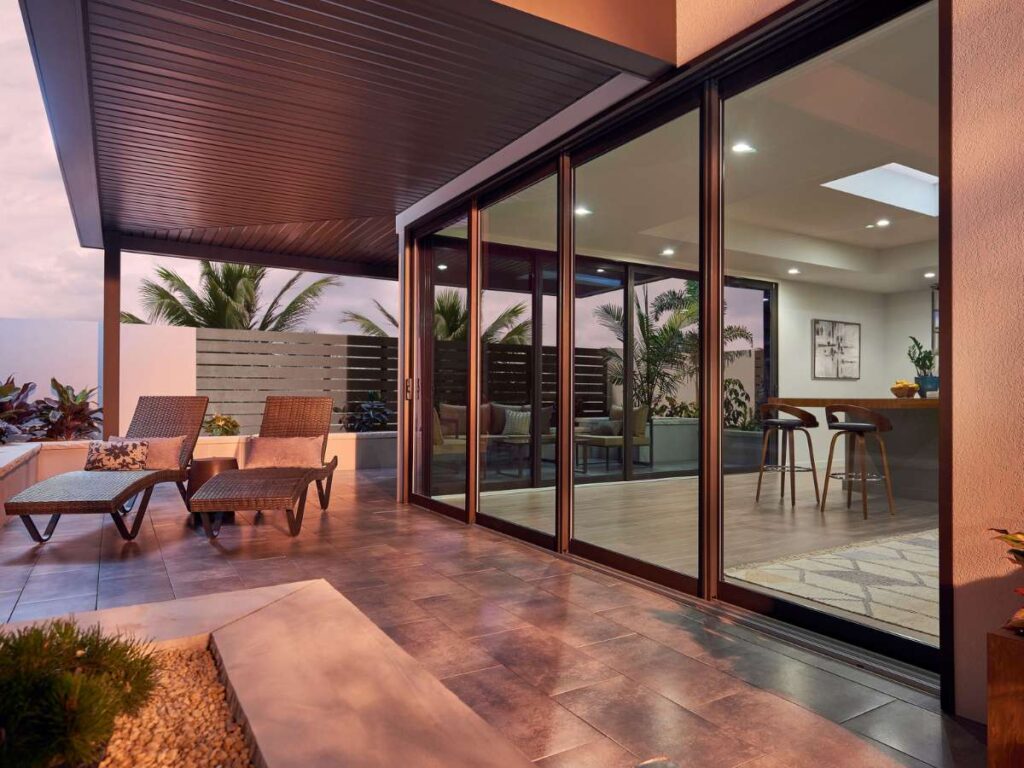
9. Steel Security Door with Veneer Finish
This one doesn’t get used often, but when it fits, it fits perfectly. A Dutch door adds light, airflow, and a touch of charm while still offering control over privacy and security.
Ideal for villas that want something a bit different without losing function.
Key Features
- Split Design: The door is divided into two independent halves. You can open the top for ventilation or interaction while keeping the bottom locked.
- Flexible Locking Options: Comes with separate locks for each half or a combined locking system. Helps meet safety or access rules in shared-use zones.
- Works with Screens or Panels: Easy to pair with glass, mesh, or shutters on the upper half. Useful for staff counters, back kitchen doors, or garden access.
- Customizable Materials: Can be made in wood, composite, or uPVC. Style can shift from classic to modern depending on the build.
- Design-Friendly Visuals: Add a relaxed, semi-open look to guest zones. It feels casual, but can still be made solid and secure.
Best Use Cases
- Guest-Facing Back Doors: I’ve seen these work great on villas with kitchens or garden lounges that open to guests. You get airflow and a bit of personality.
- Service Areas with Supervision Needs: Perfect for zones where staff need to pass items without opening the whole door like kitchen pass-throughs or supply drop-offs.
- Pet- or Kid-Friendly Villas: Useful when owners want a door that keeps pets in but still lets in breeze or conversation. It’s a niche case, but very appreciated.
Considerations Before Choosing
- Lower Security Rating: While functional, it’s not a high-security door. Best used in controlled or gated environments.
- Not Great for Wet Zones: Rain and dust can sneak in through the split if not properly sealed. Avoid placing in exposed areas.
- Limited Fire or Code Ratings: Often doesn’t qualify for fire escape or thermal insulation requirements. Check with your compliance team first.
- Hinges Need Support: Because each half swings on its own, you’ll need proper alignment and hardware. Poor installation leads to long-term issues.
Dutch doors aren’t for every project, but they’re memorable when done right. They offer flexibility, fresh air, and a look that helps set a relaxed, functional tone in the right part of a villa.
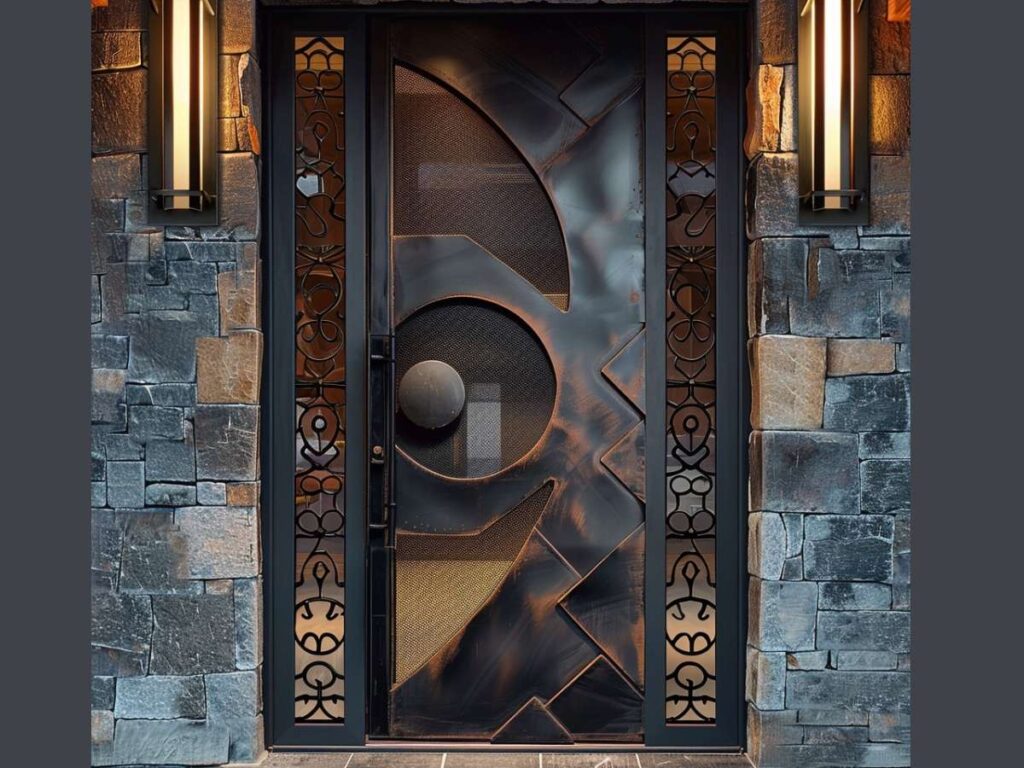
10. Dutch Door (Split Door Style)
These are the go-to when you want a clean visual connection between indoor and outdoor spaces. French doors create openness, encourage natural light, and still offer reliable access control.
They’ve become a staple in villa architecture for both guest and private areas.
Key Features
- Double Door Design: Usually made of two full-length glass panels that swing open from the center. Creates a wider passage and symmetrical appearance.
- Multiple Glazing Options: You can choose from single, double, or even laminated glass. Good for adjusting energy performance or sound control.
- Timber, Aluminum, or uPVC Frames: Different materials give different benefits. Wood feels warmer, aluminum is slimmer and stronger, uPVC keeps costs low.
- Optional Grilles or Dividers: For a more traditional look, you can add gridlines across the glass. Or keep it plain for a modern style.
- Hardware Flexibility: Compatible with standard or smart locking systems. You can get creative with handles, deadbolts, or concealed closers.
Best Use Cases
- Balcony or Garden Entryways: These doors work well where the view matters. Villas with landscaping or pool areas often choose French doors to create that seamless feel.
- Guest Lounge or Dining Access: I’ve worked on builds where these separate dining halls from patios. It creates a soft divide that still feels open when needed.
- Small Room Extensions: If a room needs more light but a full sliding system isn’t feasible, this is a smart middle ground. Looks good and doesn’t need much wall space.
Considerations Before Choosing
- Requires Swing Clearance: Since both sides open on hinges, you need to plan for interior or exterior clearance. Tight corridors may not work.
- Glass May Need Film or Coating: In hot climates, clear glass can cause heat gain. Consider low-e or tinted options.
- Security Relies on Locking Points: Standard locks can be weak on double doors. Go for multi-point or internal shoot bolts for peace of mind.
- Weather Sealing Needs Attention: Gaps around the edges can let air in if the door isn’t installed properly. Don’t skip good thresholds and seals.
French doors combine openness with structure perfect for villas that need to feel welcoming without giving up performance. With the right materials and layout, they deliver both style and substance.
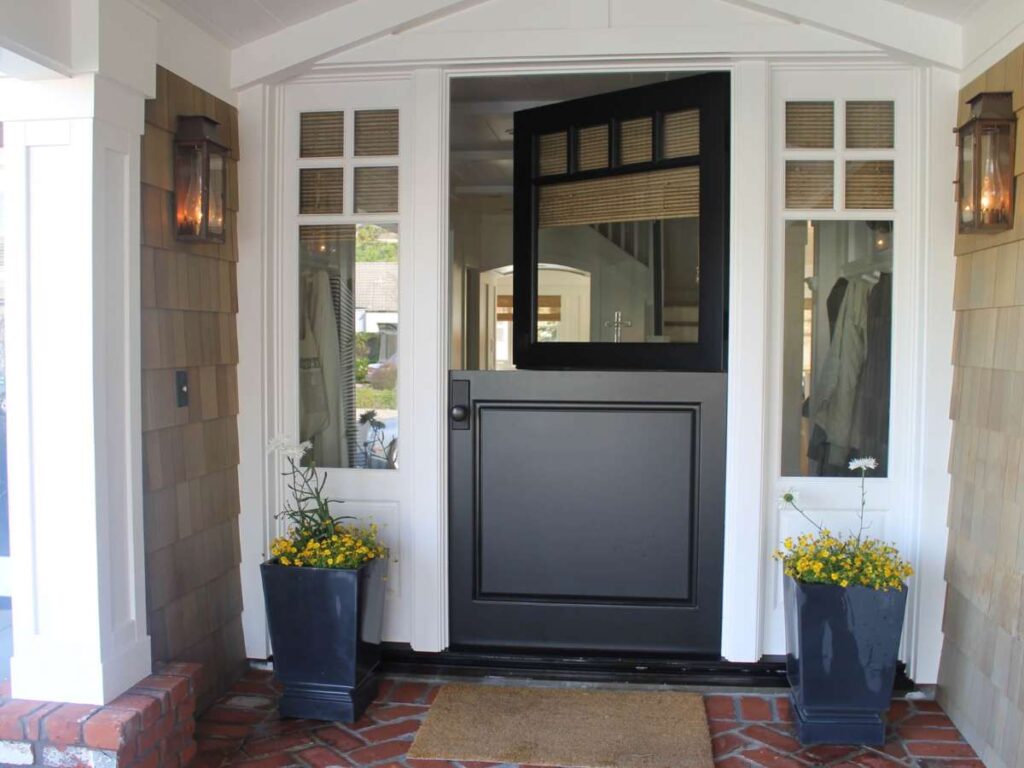
Final Tips Before You Choose a Door for Your Villa
Picking the right door can seem simple at first. But once you’re deep into a villa build or renovation, you realize how much it really affects the feel of the space.
Here are a few things to help you choose wisely:
- Match Use With Location: Ask yourself where the door will go. A solid teak door might be perfect at the main entrance, but not ideal near a small garden access.
- Think About Climate: Every material behaves differently in heat, humidity, or coastal air. Aluminum may do well in the sun, but uPVC starts to fade faster than expected.
- Don’t Rush the Finish: That includes colors, coatings, and even the hardware. In one build, mismatched door hardware caused weeks of delay because it looked off against the stone.
- Ask Who Will Use It Most: Will guests see it first? Is it for daily staff use? Thinking about this helps you pick something that works both visually and practically.
- Plan for Maintenance: Some doors need repainting or resealing every few years. Others might just need a wipe-down. It’s easier to plan now than deal with surprises later.
- Get In Early With Your Supplier: Many doors are made-to-order. If your build’s on a schedule, place the door order early. I’ve seen teams scrambling because their frames arrived before their doors.
Choosing the right villa door isn’t just about looks. It’s about flow, function, and long-term use. If you want solid options and straight answers, Vallisco has been a reliable name I’ve trusted across different types of projects.
Conclusion
You’ve just seen 10 types of villa doors, each with its own strengths. From solid teak to simple uPVC, every choice has a place depending on your climate, layout, and goals. Whether you need quiet performance or a bold entrance, there’s something that fits.
So, which one feels right for your project? What does your door need to do beyond just open and close?
If you’re not sure yet, that’s okay. Start by asking the right questions, and if you need help, Vallisco is ready to talk.
More Guides and Tips to Explore
We’ve got more for you! These articles provide more tips and guidance to keep you on track:
- Door Manufacturing: A Step-by-Step Guide
- Your Guide to Choosing Villa Windows
- Top 7 Villa Door Manufacturers in Dubai
Still haven’t found what you’re looking for? Don’t hesitate to contact us. We’re available around the clock to assist you.


